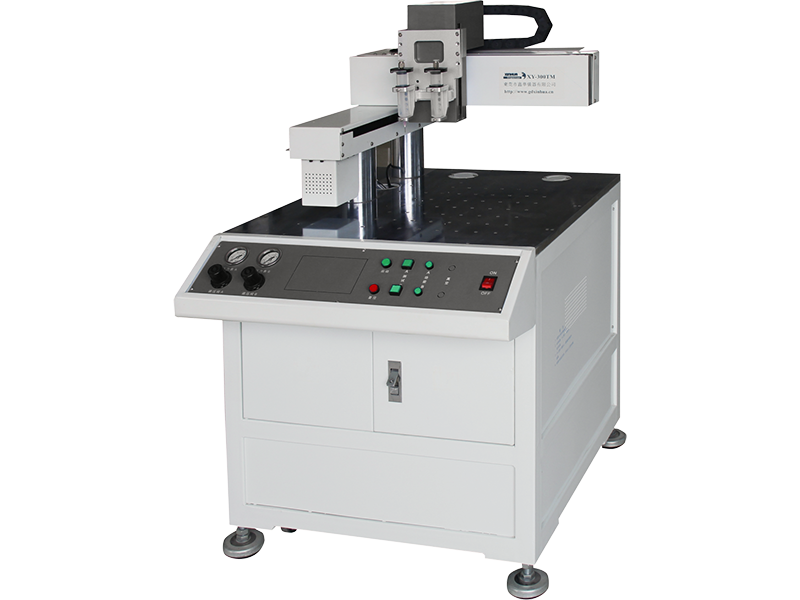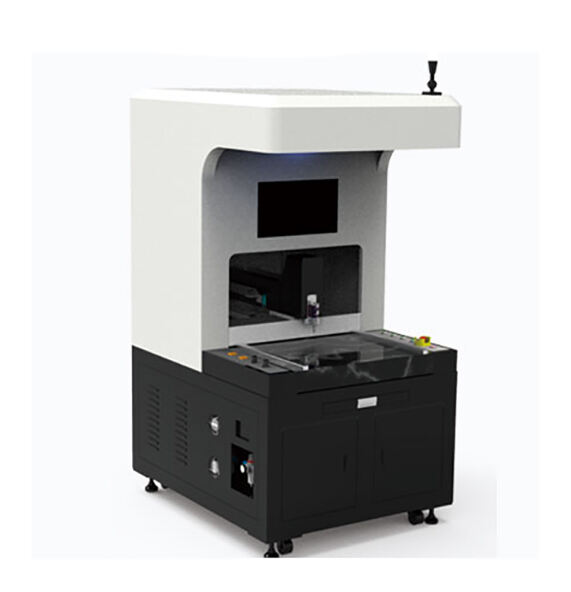 ×
×
High-precision glue dispensing systems are essential for manufacturing intricate components with micron-level tolerances. These systems utilize advanced technology such as servo-driven nozzles, enabling precise and repeatable adhesive placement. The use of such precision equipment ensures that manufacturers can assemble complex components with a high degree of accuracy. Comparative studies indicate that achieving micron-level accuracy not only enhances the performance of a product but also allows manufacturers to introduce more complex and innovative products into the market. Assembling intricate parts with consistency ultimately leads to higher-quality end products, keeping companies competitive and meeting the demands of sophisticated markets.
Precision dispensing techniques play a crucial role in improving both the durability and aesthetics of products. By minimizing adhesive overflow, precision systems lead to cleaner finishes and reduce the need for extensive post-processing labor. Additionally, when adhesives are applied accurately, the resulting bonds are stronger, significantly enhancing the durability of the final product. Case studies have shown that products manufactured with high-precision glue dispensing systems tend to exhibit lower failure rates and longer lifespans. This dual advantage of improved aesthetics and durability serves to elevate a product's market appeal and extend its usefulness, presenting a strong case for the integration of precision dispensing technologies into assembly lines.
Controlled adhesive application significantly reduces glue waste, making the production process more efficient and cost-effective. Industry reports suggest that by utilizing effective glue dispensing systems, manufacturers can decrease adhesive waste by up to 30% without compromising the quality of the bond. This results in substantial savings on material costs, which is particularly beneficial in large-scale production. Moreover, optimized dispensation of adhesives aligns with sustainability initiatives that are becoming increasingly important in today's environmentally-conscious market. By adopting such eco-friendly practices, companies can not only enhance their operational efficiency but also improve their brand image by committing to sustainability.
CCD vision systems are revolutionizing glue dispensing by offering real-time monitoring and immediate error detection. These systems ensure that the adhesive placement is accurate, which greatly enhances product quality. Studies have shown that such precise monitoring leads to a 20% reduction in defects in high-volume manufacturing. This not only improves the overall efficiency of production lines but also helps in maintaining consistent product standards, which are crucial in competitive markets.
Automated nozzle calibration has become a key component in achieving high precision in glue dispensing systems. By continuously adjusting the nozzle settings, manufacturers can ensure that each production run meets high standards of accuracy and reliability. The addition of UV curing capabilities further optimizes production, as adhesives can cure almost instantly under UV light. Companies that have adopted these technologies report up to a 50% increase in production efficiency, allowing them to allocate resources more effectively and maximize throughput.
Multi-axis motion control is essential for glue dispensing in complex 3D assemblies, especially in industries such as automotive and electronics. This technology offers enhanced flexibility and precision, allowing manufacturers to handle intricate designs with ease. Evidence from leading manufacturers indicates that integrating multi-axis systems significantly reduces assembly time, which improves productivity. This advancement provides an opportunity for companies to not only streamline operations but also expand their capabilities in dealing with complex geometries.
The XY-D33403 Axis Glue Dispenser is a major innovation in glue dispensing machines, bringing efficiency to your production line without the need for extensive modifications. This machine seamlessly integrates into existing production facilities, enhancing overall operational flow and productivity. Designed for high-volume output, it boasts rapid dispensing speeds while ensuring precise application of adhesives, making it suitable for various modern assembly requirements such as PCB fixation, LCD placement, and mobile phone board coating. User testimonials often highlight the ability to achieve faster cycle times and reduced labor costs with this advanced machine, emphasizing its utility in improving throughput.

The XY-QE400 CCD Glue Dispenser is equipped with AI-powered algorithms for advanced pattern recognition, paving the way for unparalleled accuracy in glue dispensing operations. This cutting-edge system responds to product variations in real-time, adapting dispensing patterns instantaneously, thereby minimizing errors and enhancing production accuracy. The use of AI for identifying defective products and automating adaptations in application processes adds significant value, as noted by client feedback which frequently highlights improved production accuracy and reduced variation. This system's AI model is especially efficient in handling intricate applications that manual processes struggle with, thereby maximizing overall production efficiency.

Maintaining optimal viscosity is crucial for effective glue dispensing, especially in Surface Mount Technology (SMT) environments. Viscosity directly impacts flow rates and curing times, emphasizing the importance of using suitable viscosity monitoring tools to ensure consistency and quality. Research has demonstrated that managing material viscosity can significantly improve product performance, which underscores its critical role in maintaining production quality and efficiency. For instance, advances in technology have introduced real-time viscosity sensors that aid in pinpointing and correcting deviations, ensuring reliable and consistent adhesive application.
Synchronizing dispensing valves with conveyor speeds is essential for accurate adhesive application as products move along the assembly line. This synchronization ensures that adhesive is applied precisely where needed, minimizing errors and reducing wastage. Improper synchronization can lead to application errors, waste, and increased costs, highlighting the necessity for regular adjustments. Empirical data suggests that precise synchronization can enhance overall process efficiency by as much as 25%, offering substantial improvements in operational output. Implementing automated systems for real-time monitoring could further streamline the process and boost production rates.
Implementing a robust preventive maintenance plan ensures the longevity and consistency of glue dispensing systems. Regular maintenance is pivotal in reducing downtime and enhancing reliability, which is essential for maintaining production schedules and meeting market demands. Statistical analysis indicates that companies with strong maintenance protocols experience up to 40% less equipment failure, contributing significantly to operational efficiency and cost savings. Scheduling routine checks and incorporating predictive maintenance technologies can drastically cut down unplanned outages and keep systems running smoothly, ultimately leading to sustained production quality.
In the medical device industry, precision in adhesive applications is paramount to ensure both safety and efficacy during the encapsulation process. This requires adhesives that meet stringent regulatory standards, which can be efficiently achieved through automated precision dispensing systems. Such systems not only enhance accuracy but also comply with medical device regulations, ensuring that the encapsulated devices function reliably. Data from regulatory bodies suggests that devices properly encapsulated with precision adhesives experience fewer failures during clinical trials, underscoring the importance of advanced glue dispensing technologies in the sector.
Automotive electronics demand precise underfill applications to safeguard sensitive components from environmental stresses like thermal expansion. High-precision glue dispensing solutions are crucial in overcoming these underfill challenges, ensuring product reliability and performance. Industry experts highlight that employing advanced underfill techniques can effectively reduce failure rates in automotive electronics by over 30%. This significant improvement demonstrates the role of precision adhesive systems in maintaining functionality and durability in the automotive sector.
In LED lighting applications, adhesives play a dual role in assembly and thermal management, vital for enhancing the performance and lifespan of these products. Precision glue dispensing ensures uniform adhesive distribution, which is critical for effective heat dissipation—a key factor in thermal management. Surveys demonstrate that optimizing adhesive application for better thermal management can substantially extend the lifespan of LED products, highlighting the importance of precision adhesive systems in LED production. This approach not only supports assembly but also contributes to the overall efficiency and longevity of LED lighting products.